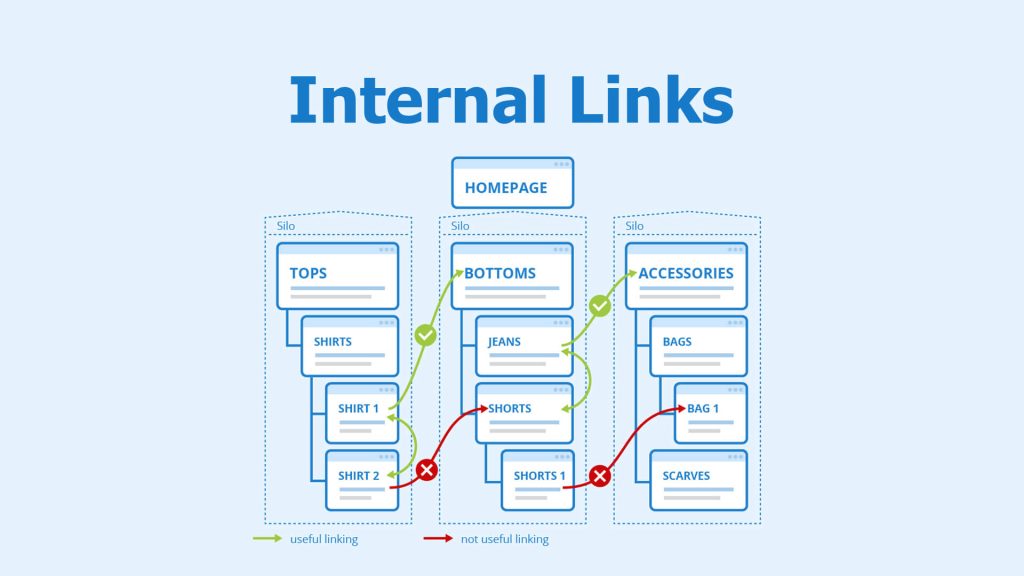How to Build Your Website Architecture for SEO
In the realm of digital marketing, optimizing your website for search engines is paramount to ensuring visibility and driving organic traffic. One often-overlooked aspect of SEO is website architecture – the structural foundation that determines how search engines crawl and index your site. Building a solid website architecture not only enhances user experience but also plays a crucial role in improving search engine rankings. In this comprehensive guide, we’ll delve into the fundamental principles and best practices for structuring your website to maximize SEO performance and propel your online presence to new heights. Let’s dive in!
Table of Contents
What Is Website Structure?
Website structure refers to the organization and layout of a website’s pages, content, and navigation. It determines how information is organized and presented to visitors, as well as how search engines understand and index the site. A well-structured website is user-friendly, intuitive to navigate, and optimized for search engines, making it easier for users to find relevant information and for search engines to crawl and index the site efficiently. Website structure typically includes elements such as main navigation menus, categories, subcategories, internal linking, and hierarchical organization of pages. It plays a crucial role in improving user experience, driving engagement, and enhancing SEO performance.

Why Is Website Architecture Important?
- User Experience: A well-organized website architecture enhances user experience by making it easier for visitors to navigate and find the information they need quickly and intuitively.
- SEO Performance: Search engines rely on website architecture to crawl and index web pages effectively. A clear and logical structure helps search engines understand the content and relevance of each page, improving visibility and rankings in search results.
- Site Speed: Efficient website architecture can contribute to faster loading times, which is critical for retaining visitors and improving search engine rankings. A streamlined structure reduces the time it takes for users to access content, resulting in a better overall browsing experience.
- Content Organization: Proper website architecture allows for the effective organization and categorization of content, making it easier for both users and search engines to navigate and comprehend the site’s offerings.
- Scalability: A well-designed architecture accommodates future growth and expansion, enabling the site to scale seamlessly as content and functionality evolve over time.
What Does a Good Website Architecture Look Like?
- Clear Hierarchy: It organizes content in a logical hierarchy, with main categories and subcategories that are easy to navigate.
- Intuitive Navigation: Users can easily find what they’re looking for through clear and intuitive navigation menus, breadcrumbs, and internal links.
- Consistent Design: The design elements, layout, and navigation structure remain consistent across all pages of the website, providing a cohesive user experience.
- Mobile-Friendly: The architecture is responsive and optimized for mobile devices, ensuring accessibility and usability across different screen sizes.
- SEO-Friendly: It is designed with SEO best practices in mind, including keyword-rich URLs, optimized meta tags, and a crawlable site structure.
How to Structure a Website
Use internal links strategically
Strategic internal linking is essential for website optimization. Ensure links are contextually relevant, optimizing anchor text with keywords. Maintain a hierarchical structure to aid navigation. Avoid overlinking to prevent user confusion. Regularly monitor performance to refine your linking strategy for improved SEO and user experience.

Use breadcrumbs
Implementing breadcrumbs aids navigation by displaying the hierarchical structure of a website. These clickable navigation aids appear at the top of a webpage, guiding users back to previous pages. Breadcrumbs enhance user experience, reduce bounce rates, and improve SEO by reinforcing website structure and internal linking.
Optimize your site’s URLs
Optimizing URLs involves creating concise, descriptive, and user-friendly web addresses that accurately reflect page content. Short, keyword-rich URLs are favored by search engines and users alike, improving visibility and click-through rates. By organizing URLs logically and avoiding unnecessary characters, you enhance SEO performance and user experience on your website.
Create Navigation Menu
A navigation menu is a crucial component of website architecture, providing users with easy access to various pages and content. By organizing menu items logically and hierarchically, you can improve user experience and site usability. Ensure clear labels and intuitive navigation paths to help visitors find information quickly and efficiently. Additionally, consider incorporating dropdown menus or mega menus for larger websites with extensive content to streamline navigation further. Ultimately, a well-designed navigation menu enhances user engagement and encourages exploration of your website’s offerings.

Conclusion
In conclusion, building a solid website architecture is essential for optimizing your site’s performance and enhancing user experience. By implementing the strategies outlined in this guide, such as organizing content logically, optimizing URLs, and using internal links strategically, you can improve your site’s SEO rankings and make it more user-friendly. Remember to regularly review and update your website architecture to accommodate changes in content and user needs. With a well-structured website, you can attract more visitors, keep them engaged, and ultimately achieve your online goals more effectively. Invest time and effort into your website architecture to reap the benefits of improved visibility and usability.
Read More 6 Ways to Improve SEO Rankings
FAQ’S
What role does website architecture play?
Website architecture determines how information is organized and presented on a website for optimal user experience and search engine visibility.
How does website architecture impact SEO?
A well-structured website architecture enhances SEO by improving crawlability, facilitating indexing, and boosting user engagement and retention.
What are the key components of website architecture?
Key components include site navigation, URL structure, internal linking, and page hierarchy, all contributing to user-friendly browsing and search engine optimization.







